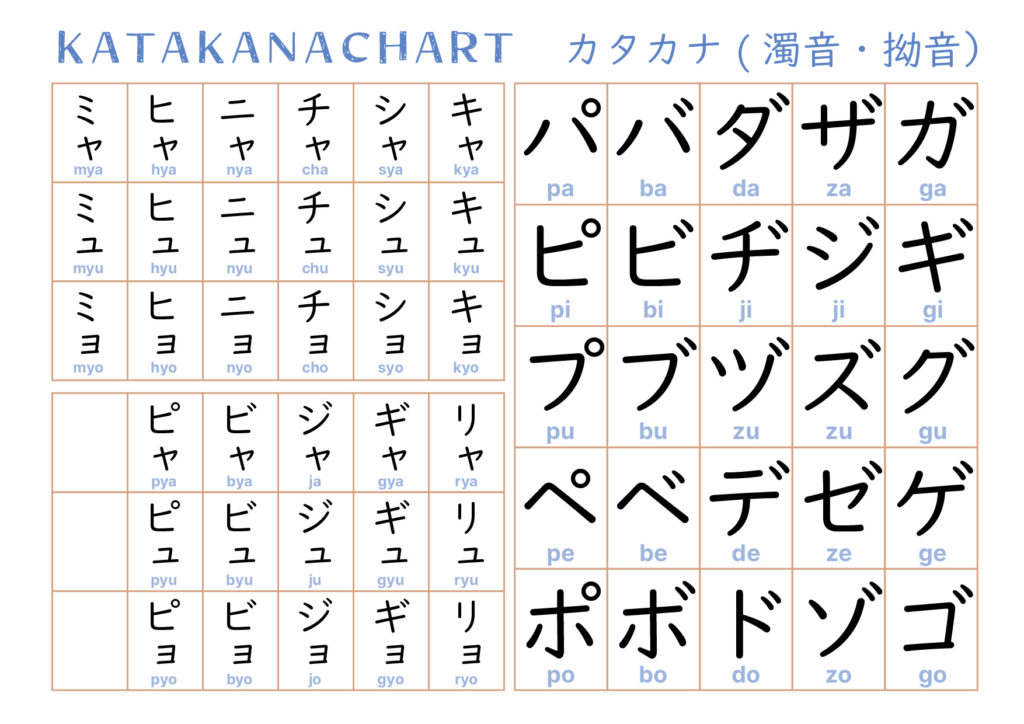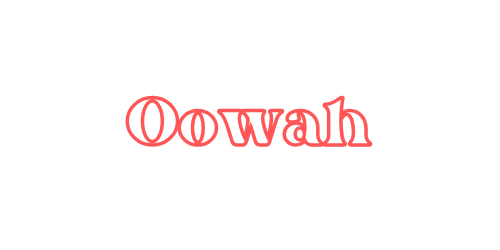
Mastering Katakana:
Dakuten, Handakuten, and Yōon
If you’ve started learning Katakana (カタカナ), you might have come across Dakuten (濁音), Handakuten (半濁音), and Yōon (拗音). These modifications are essential for reading and writing Katakana accurately. This guide will explain what they are, why they matter, and how you can learn them effectively.
What Are Dakuten and Handakuten?
Dakuten (゙) and Handakuten (゚) are small marks placed on certain Katakana characters to modify their pronunciation.
Dakuten (゙) – Voiced Sounds
Dakuten looks like a small quotation mark (゙) and changes the sound of specific Katakana characters:
- K → G: カ (ka) → ガ (ga)
- S → Z: サ (sa) → ザ (za)
- T → D: タ (ta) → ダ (da)
- H → B: ハ (ha) → バ (ba)
Handakuten (゚) – P-Sounds
Handakuten is a small circle (゚) that only applies to the H-line of Katakana, turning it into P-sounds:
- ハ (ha) → パ (pa)
- ヒ (hi) → ピ (pi)
- フ (fu) → プ (pu)
- ヘ (he) → ペ (pe)
- ホ (ho) → ポ (po)
What is Yōon (拗音)?
Yōon refers to combination sounds created when a smaller ヤ (ya), ユ (yu), or ヨ (yo) is added to certain Katakana characters. These sounds allow for smoother pronunciation of words borrowed from other languages.
Common Yōon Combinations in Katakana:
- K-line: キャ (kya), キュ (kyu), キョ (kyo)
- S-line: シャ (sha), シュ (shu), ショ (sho)
- T-line: チャ (cha), チュ (chu), チョ (cho)
- N-line: ニャ (nya), ニュ (nyu), ニョ (nyo)
- H-line: ヒャ (hya), ヒュ (hyu), ヒョ (hyo)
- M-line: ミャ (mya), ミュ (myu), ミョ (myo)
- R-line: リャ (rya), リュ (ryu), リョ (ryo)
Examples of Words Using Yōon
- ニュース (nyūsu) – News
- コンピューター (konpyūtā) – Computer
- ミュージック (myūjikku) – Music
Tips for Learning Dakuten, Handakuten, and Yōon
- **Practice Writing—**Writing helps reinforce the stroke order and muscle memory.
- Use flashcards—categorise them into basic, Dakuten, and Yōon characters for quick review.
- **Read Katakana Words—**Focus on foreign words in Japanese media, menus, and advertisements.
- **Listen and Speak—**Repeating words with these modifications improves pronunciation.
- **Try Online Games & Quizzes—**Interactive tools make learning engaging and effective.

Common Mistakes to Avoid
- CoCharacters—milar CharactersBe mindful of differences between characters like シ (shi) vs ツ (tsu).
- Forgetting the ModificationsAlways check if a word requires Dakuten or Handakuten.
- Mispronouncing Yōon – Ensure you don’t separate the small ヤ, ユ, ヨ from the main character.
Conclusion
Mastering Dakuten, Handakuten, and Yōon yōonatakana is crucial for reading and writing fluently. With consistent practice, these modifications will become second nature. Keep practicing, and soon, you’ll recognise and use these sounds effortlessly!
Start practicing today and boost your Katakana skills!
